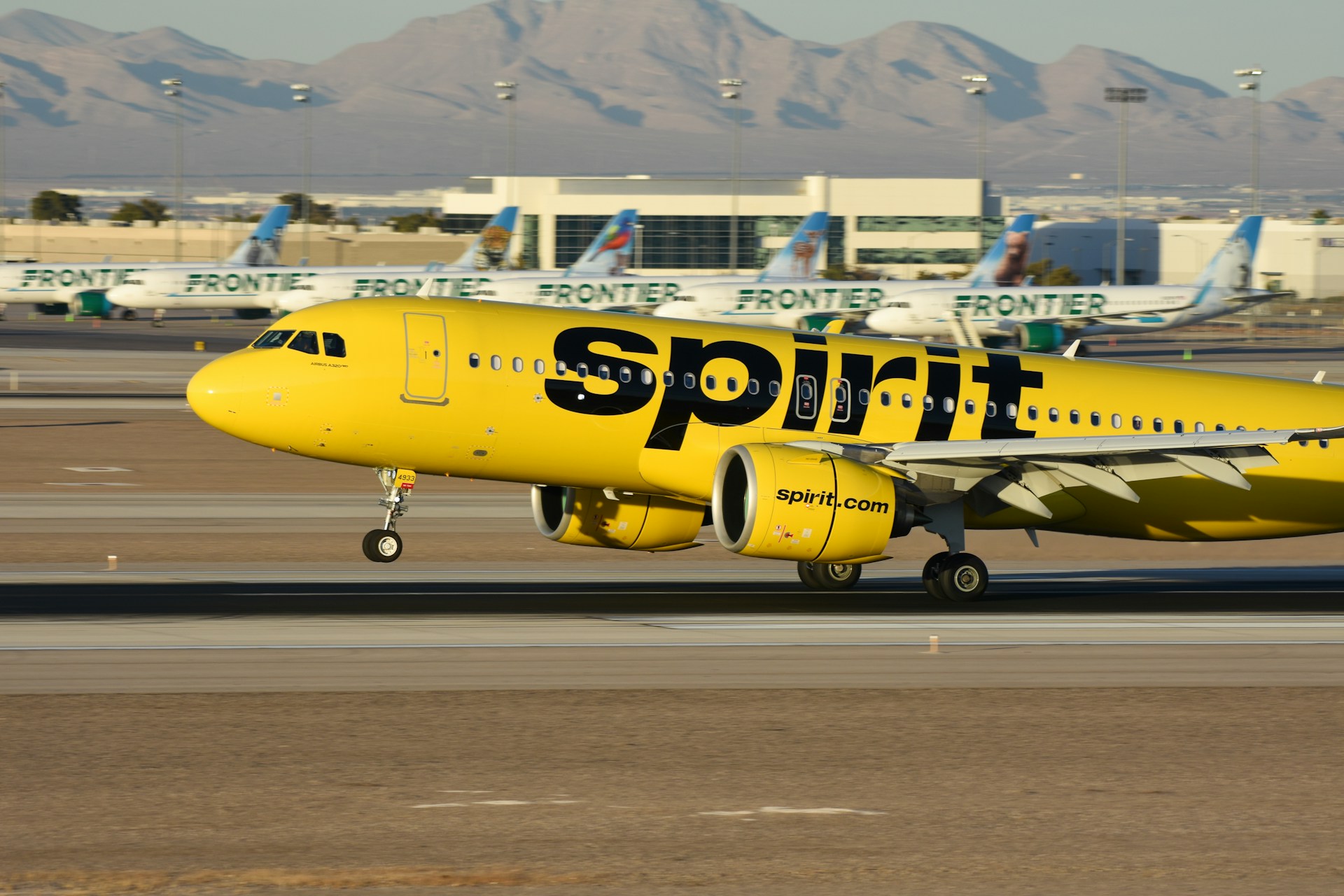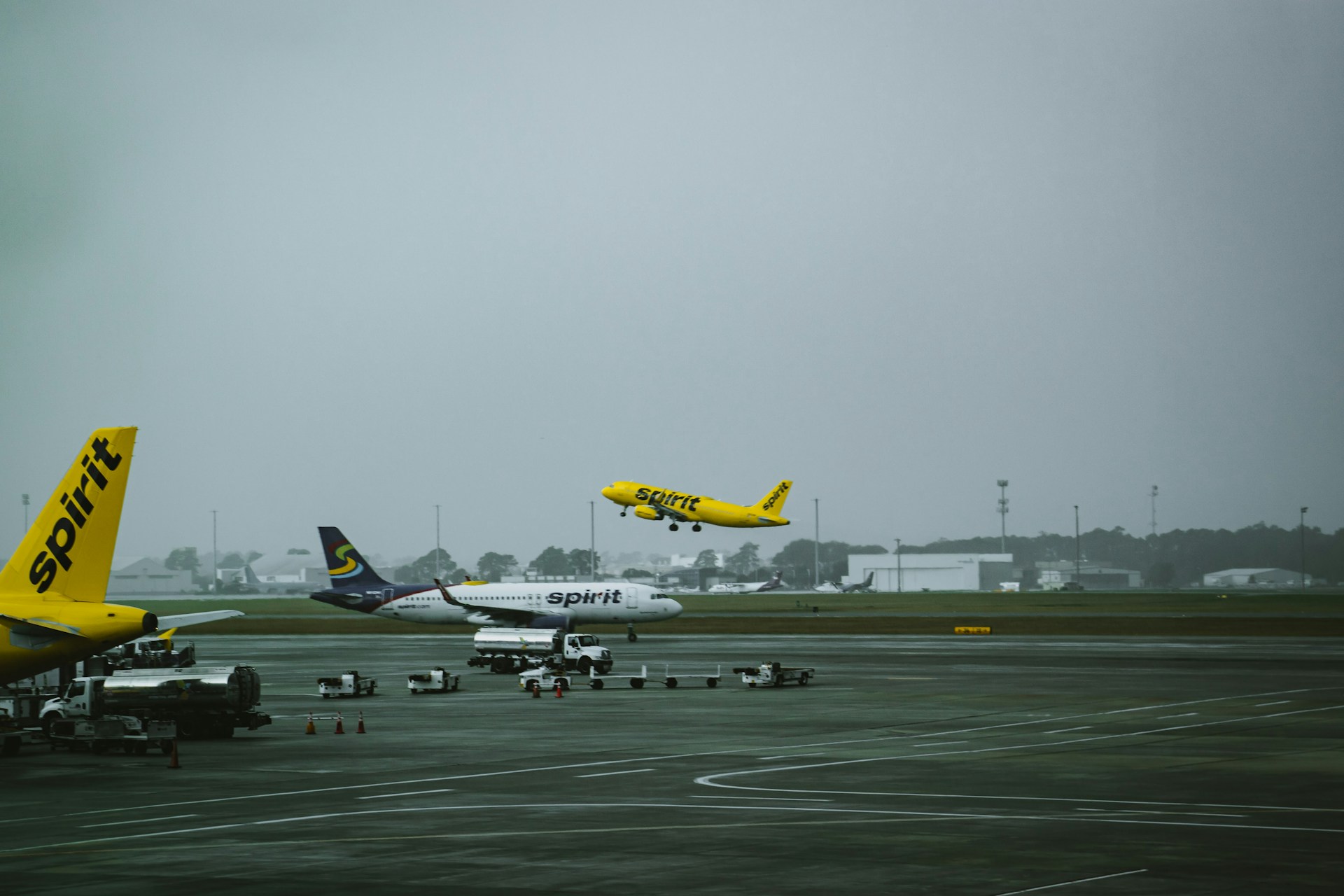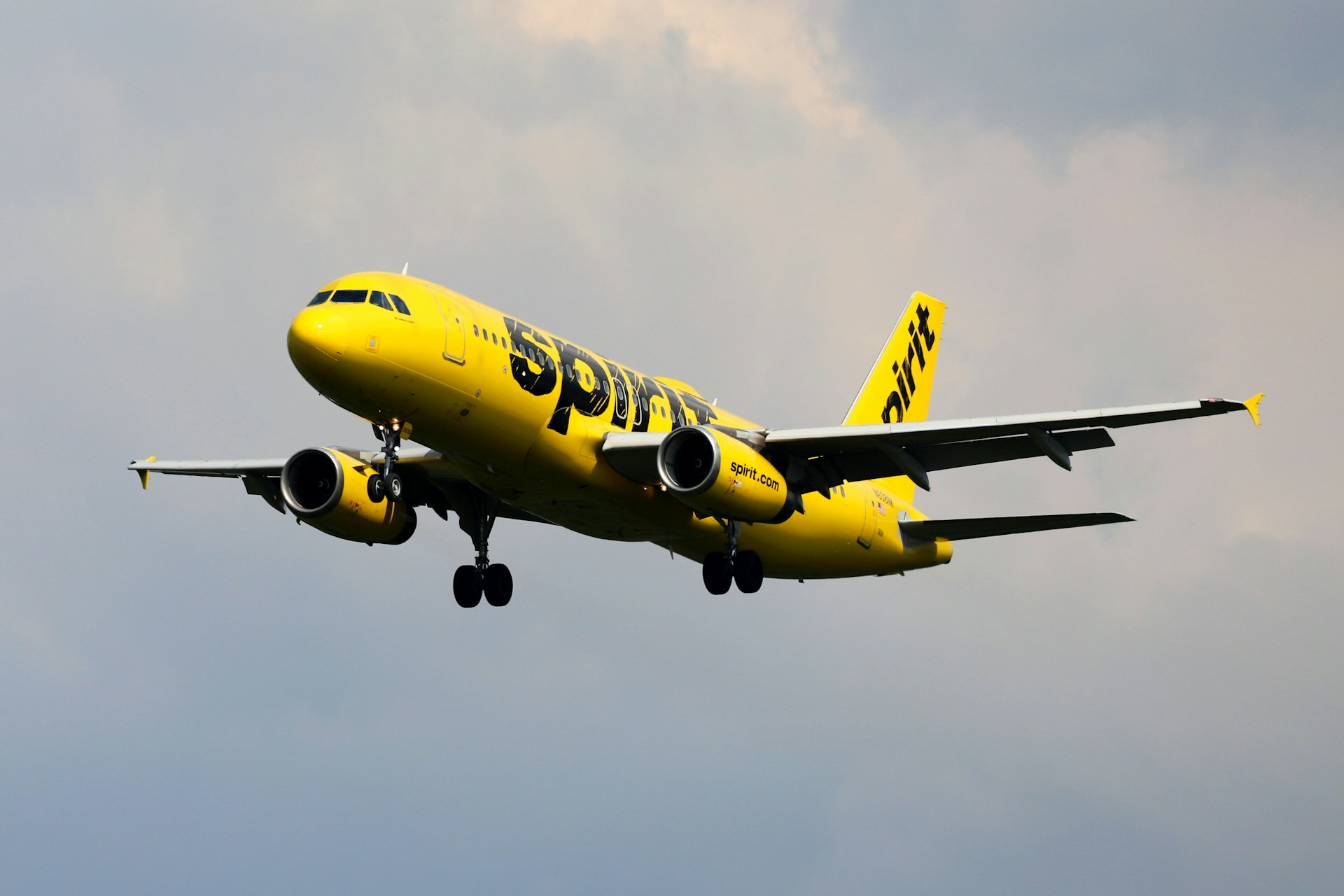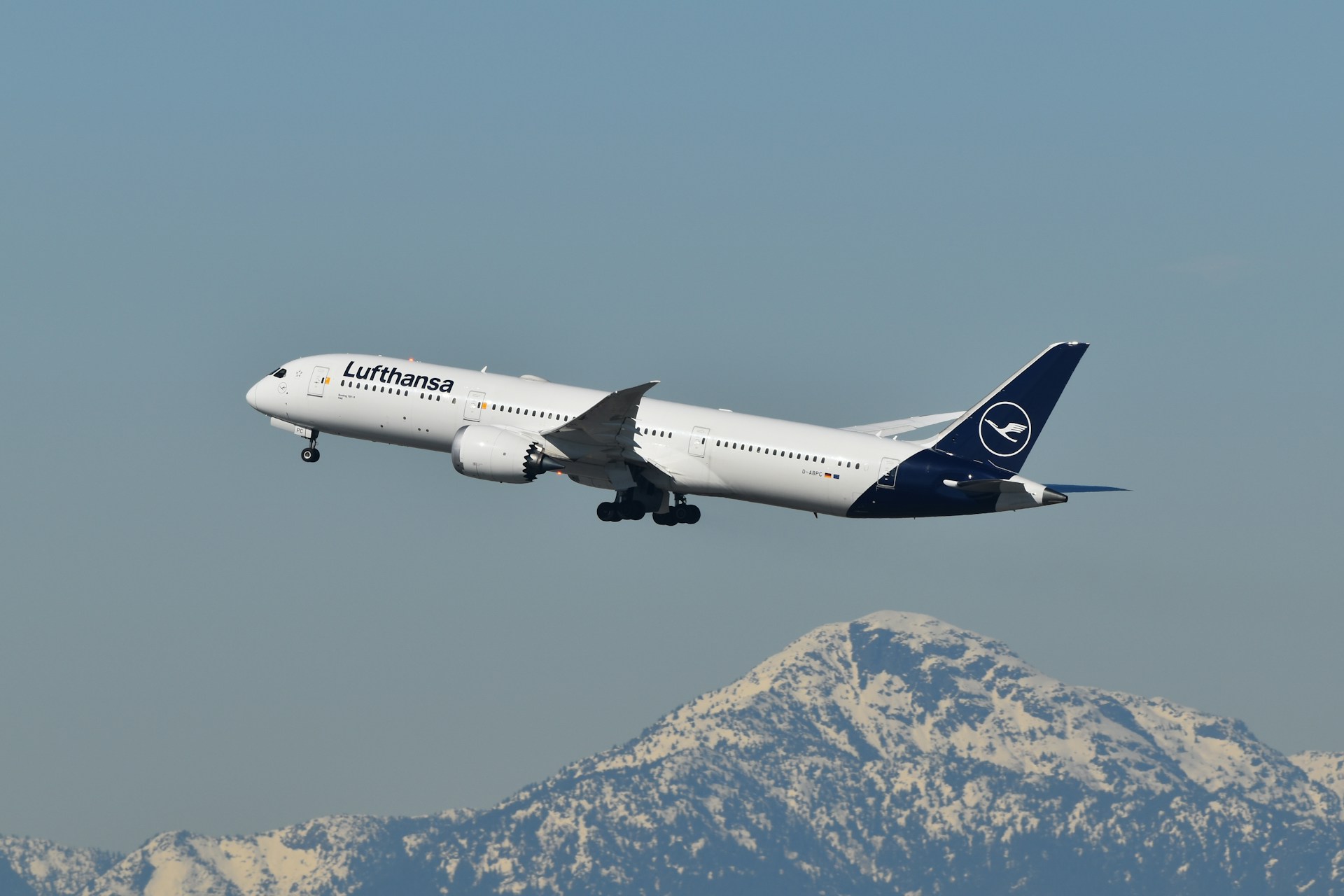Spirit Airlines – the budget carrier known for its bright yellow planes and bare-bones fares – has filed for Chapter 11 bankruptcy protection for the second time in less than a year. The Florida-based airline emerged from its previous bankruptcy reorganization in March 2025, but mounting financial troubles and market pressures have pushed it back into a court-supervised restructuring just months later. This rare repeat filing, the first for a major U.S. airline since 2011, underscores the deepening crisis facing the ultra-low-cost carrier and raises urgent questions about what comes next for Spirit.
A Second Bankruptcy in Under a Year
Spirit’s latest Chapter 11 filing was widely anticipated after the company warned earlier this month of “substantial doubt” about its ability to continue operating through the year without drastic action. The airline had first filed for bankruptcy protection in November 2024, shortly after a federal judge blocked its proposed merger with JetBlue Airways. That was one of two failed merger attempts – the other with Frontier Airlines – that had been pursued as lifelines for the struggling carrier.
Spirit managed to exit that initial bankruptcy by slashing roughly $795 million in debt through debt-to-equity conversions and raising $350 million in new equity from investors. However, those measures proved insufficient to fix Spirit’s financial woes. By the second quarter of 2025, Spirit was still losing money at an alarming rate, posting a net loss of about $246 million, and had burned through its cash reserves. The airline resorted to drawing down the entirety of its $275 million credit line just to sustain operations. With operating costs outstripping revenue – total expenses reached 118 percent of revenue last quarter – and no quick turnaround in sight, Spirit’s leadership determined that another Chapter 11 process was the “best path forward” to ensure the company’s long-term survival.
Spirit CEO Dave Davis put it bluntly: “Since emerging from our previous restructuring… it has become clear that there is much more work to be done and many more tools are available to best position Spirit for the future.” In an open letter to customers, Davis emphasized that virtually every major U.S. airline has used bankruptcy restructuring tools at one point to improve their business and emerge stronger – framing Spirit’s move as a proactive step toward a more stable future.

Deepening Crisis: High Costs, Heavy Losses, Soft Demand
Spirit’s return to bankruptcy court comes amid a perfect storm of financial and competitive challenges. The airline has had a rough ride since the COVID-19 pandemic, struggling to rebound as costs soared and debt mounted. By the time of its first Chapter 11 filing in late 2024, Spirit had accumulated more than $2.5 billion in losses since 2020. Despite wiping out a large chunk of debt in the last restructuring, Spirit still carries $2.4 billion in long-term debt and was deeply cash-flow negative in recent months.
In a quarterly SEC filing in early August, Spirit’s parent company bluntly stated it had “substantial doubt” about the airline’s ability to continue as a going concern without additional cash infusions. The filing cited “adverse market conditions” following the earlier bankruptcy – namely, persistently weak demand for domestic leisure travel and operational uncertainties that are expected to continue through at least the end of 2025.
This softening demand has created a challenging pricing environment, making it hard for ultra-low-cost players like Spirit to fill planes without steep discounts. At the same time, competition has intensified. Larger legacy airlines and other rivals have aggressively matched discount fares with their own basic-economy products, eroding the price advantage that no-frills carriers rely on. Spirit’s niche – offering rock-bottom base fares with fees for add-ons – has also been pressured by consumers’ post-pandemic preferences. Many travelers are now placing greater value on comfort and service, a shift that upended the ultra-low-cost model.
Spirit has tried to adapt. After emerging from bankruptcy in spring 2025, it began rebranding with more premium offerings to tap into demand for higher-end travel. The airline introduced tiered options like “Spirit First” and premium seats, aiming to give customers more choice beyond the bare-bones experience. But these efforts have coincided with a period of economic uncertainty and budget-conscious consumers cutting back on travel spending. In short, Spirit found itself squeezed between higher costs – fuel, labor, and fleet expenses – and an inability to boost revenues enough, all while competitors encroached on its territory.
Restructuring Plan: Cutting Fat and Refocusing the Business
In announcing the new Chapter 11 filing, Spirit outlined a comprehensive restructuring plan aimed at fundamentally overhauling its operations and cost structure. Flights and bookings will continue as normal during the court-supervised process – the airline vows there will be no disruption to service, and customers can still book travel and use tickets, credits, or loyalty points as usual.
Behind the scenes, however, Spirit plans to use bankruptcy protection to implement major changes and “build a stronger foundation” for the future. Among the key elements of Spirit’s transformation plan are:
Spirit will refocus on key markets, offering more frequencies where it competes best while reducing its presence in weaker areas. It will also rightsize its fleet to better match capacity with profitable demand. By trimming aircraft, Spirit expects to lower lease and debt obligations significantly – potentially saving hundreds of millions of dollars in annual operating costs.
At the same time, Spirit will double down on efficiency across the business, cutting costs and improving productivity to regain its edge as an ultra-low-cost leader. It also plans to continue expanding premium options through its new three-tier service model – Spirit First, Premium Economy, and Value – broadening its appeal without alienating price-sensitive customers.
Financially, the bankruptcy process will allow Spirit to renegotiate with lessors, lenders, and bondholders. The company has indicated that its common stock will likely be delisted and canceled, meaning existing shareholders are expected to be wiped out. Future ownership will depend on negotiations with creditors and potential investors who provide new financing. For now, Spirit is also seeking debtor-in-possession funding to keep operations stable during the reorganization.

Competitive Landscape and Industry Implications
Spirit’s troubles highlight the challenges facing low-cost airlines in today’s market. Competitors are already circling. Frontier Airlines, once a prospective merger partner, has been expanding its network and could benefit from Spirit’s retrenchment. Analysts believe other carriers, from Southwest to the major network airlines, may seek to capture Spirit’s market share, aircraft, or slots as the company restructures.
The fact that Spirit has filed for bankruptcy twice in one year raises broader questions about the viability of the ultra-low-cost model in a market where consumer expectations are shifting. Legacy carriers have used Chapter 11 in the past to reset their finances and emerged stronger, often through consolidation. Spirit itself has pointed to that precedent to suggest a turnaround is still possible. Yet without a merger option – after both JetBlue and Frontier bids fell apart – Spirit may find itself with limited escape routes if this restructuring doesn’t stick.
What’s Next for Spirit?
For now, Spirit insists that it’s business as usual for passengers and employees. Flights will continue, loyalty points remain valid, and paychecks will keep coming. But the real test will be whether Spirit can emerge from bankruptcy as a leaner, more competitive airline.
If successful, Spirit could reappear in 2026 as a smaller but more profitable player, focused on core markets in Florida, the Caribbean, and Latin America, with a right-sized fleet and a stronger balance sheet. But industry watchers caution that Spirit’s image problems and the broader economic climate may still pose serious risks.
There is also the possibility that a leaner Spirit could become a takeover target, with Frontier or another carrier revisiting consolidation once regulatory and financial conditions allow.
For now, Spirit’s management remains determined to go it alone, arguing that this second Chapter 11 filing is the tough medicine needed to reset the airline’s future. Whether it proves to be a lifeline or the final chapter remains to be seen.
.zip%20-%201.PNG)



